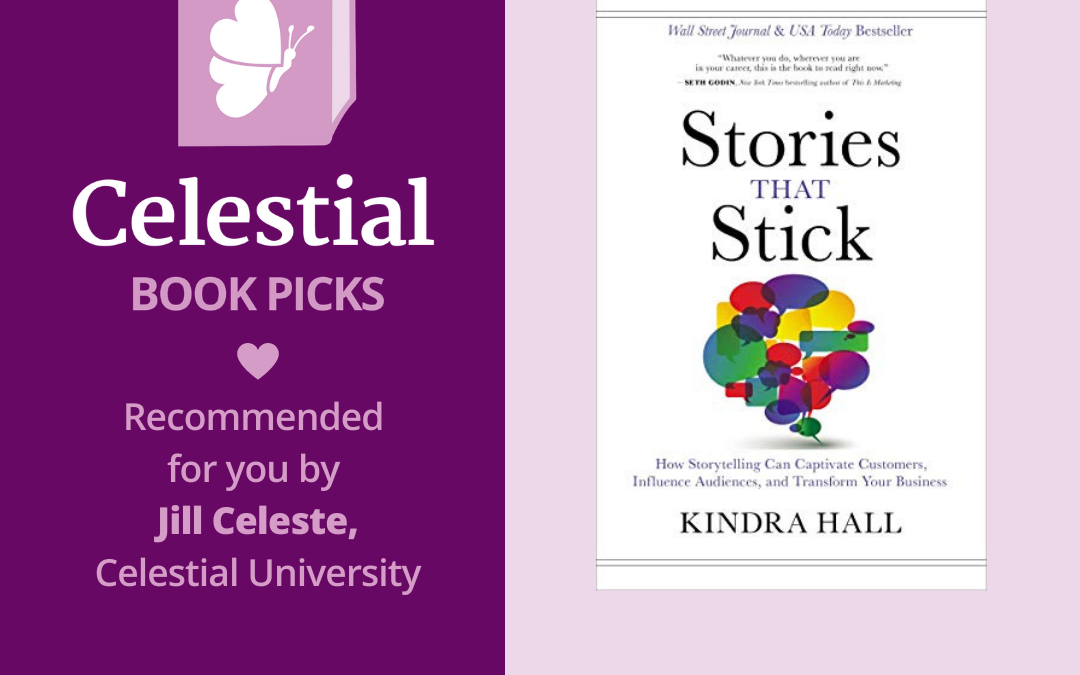Earlier this year, I watched Kindra Hall deliver a keynote address about storytelling. She was supposed to deliver it in front of a live audience at a wellness conference, but thanks to COVID, she was in a small studio instead.
I envision Kindra prepared this keynote thinking she would be on a big stage in front of a lot of people, but neither the stage nor the audience were there. So, Kindra planted herself on her designated spot, told jokes that should have gotten riotous laughter, and shared her stories. She did a remarkable job.
It was then that I decided to pick up her book, Stories That Stick, and I am so glad I did because it has inspired me to become a storyteller.
If you asked me a year ago: Are you a storyteller? I would have laughed and said no. I would have followed that response with “I am a horrible storyteller.”
Storytelling is part art, part formula. If you know the formula, the art will come. And now that I have the formula from Stories That Stick, I am much more confident in my storytelling skills.
Kindra’s storytelling approach does follow a formula, but it is still steeped in authenticity. The formula provides guideposts to make sure you are hitting the “right parts” to capture your audience.
If you want to (finally) write marketing copy that works, be sure to read Stories That Stick – and then follow Kindra’s advice. Your marketing will improve so much.
My big takeaways:
#1: Great stories have four key components
Here’s the formula: Identifiable characters, authentic emotion, a significant moment, and specific details. These four components can make any story memorable and persuasive, whether you are writing a book or trying to sell a program.
This four-part formula guided me in writing my book, Loud Woman. I now approach storytelling with more confidence knowing how to tell the story in a compelling way.
#2: Specific details are where it’s at
I especially resonate with stories that include specific details I can picture in my head. Maybe it’s the worn sleeves of an old sweatshirt or the pesky fly that buzzed around a character’s head. When you incorporate these specific details, they anchor your story. They transport your listener into the story like nothing else. Those specific details may seem unimportant, but they provide a sense of familiarity that sucks your listener in. Good stuff!
#3: I need to use more customer stories in my marketing
In Chapter 7, Kindra teaches the reader how to create a compelling customer story. As a marketing teacher, I am no stranger to great customer stories. I can teach this content all day, every day. While teaching the content is great, actually executing it for my own business is something I often forget to do. I appreciate the nudge from Stories That Stick to seek out and write more customer stories. By the way, Kindra includes an awesome framework in case you need help crafting customer stories.
How Stories That Stick relates to entrepreneurs:
Most entrepreneurs write their own marketing copy, and when they do, it’s usually a list of program features. Maybe, if the entrepreneur has gotten some training, she will include a list of customer benefits.
While this type of marketing copy has its place, I would encourage more entrepreneurs to become storytellers. A great story can do the marketing work for you. Plus, you will love the authenticity and vulnerability storytelling brings to your marketing.



